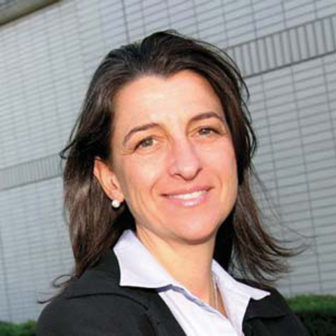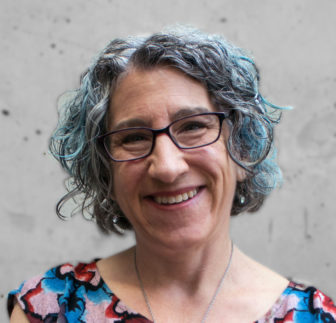California is attempting to switch to a victim-centered approach for its sexually trafficked youngsters. But despite the passage of two important and well-intentioned new laws in the last two years, both of which affect youth who have been sexually exploited, change has not come easily or quickly.
The initial goals for those who work with trafficked youngsters are in many ways heartbreakingly basic, said Diane Iglesias, senior deputy director of the state Department of Children and Family Services. After identifying the affected young people and getting them into a support network, she said, workers hope to persuade their traumatized charges not to run away from their safe housing and back to their pimps who, while abusive, are at least familiar. Only once the cycle of running away is broken, she said, can the trafficked young people embrace treatment.
“The challenging thing to understand is where on a continuum, from group home, to remote location, to locked up, does this child need to be,” she said.
Decriminalizing kids
Yet, even more basic than those concerns is the fact that, until very recently, trafficked kids were still being arrested.
The first step toward decriminalization of sex trafficked children was SB 855, signed in June 2014, which required the commercial sexual exploitation of children (CSEC) to be officially recognized as child abuse. It also allocated $14 million in funding for CSEC training for county and foster care workers and implementation of support programs. However, despite the passage of this earlier law, youth sex trafficking victims were still viewed by many police primarily as lawbreakers.
Next came Senate Bill 1322, which bans law enforcement from arresting minors involved in the sex trade, except when their safety may be at risk. This bill was an enormous and essential step in treating sex trafficked kids as the victims they are and directing them toward social services, rather than cells, child advocates say.
Sponsored by Democratic Sen. Holly Mitchell and signed into law by Gov. Jerry Brown in September 2016, SB 1322 became active on Jan. 1, 2017, formalizing a statewide commitment to recognize these young people as crime victims with unique vulnerabilities — not as criminals.
But passing a law is one thing, changing a culture’s perception is another. On Dec. 31, 2016, the day before the law was to kick into gear, Republican state Assemblyman Travis Allen published an op-ed in the Washington Examiner stating falsely that California had just “legalized child prostitution.”

Children’s Law Center
Leslie Heimov, executive director of the Children’s Law Center of California
Cultural change is a major part of implementation, said Leslie Heimov, executive director of the Children’s Law Center of California, and chair of the California CSEC Action Team Committee.
The 2014 bill, SB 855, marked the beginning of getting people to look at the entire problem differently, Heimov said. It also helped by allocating $14 million in funding to provide state-mandated local CSEC training for foster care workers plus implementation of support programs for the victimized youth.
But while SB 855 was a step in the right direction, it still did not clearly identify CSEC kids as victims of abuse, Heimov said. “Even within the child welfare community these victims weren’t victims — they were criminals — young people who were making conscious choices to sell themselves for sex.”
The glacial pace of cultural change
Now, even with the newer law, SB 1322, in place, for certain segments of the culture, such as law enforcement, the shift in perspective has been complicated.
“Los Angeles is doing a better job of getting law enforcement to the table, but statewide it has been very difficult,” Heimov explained. “The challenge is, we have some [officers] saying, ‘Well, now that there’s no crime, there’s nothing we can do’ and that is a part of the attitude and culture change.”
Police have two main functions in serving their communities, she said. One is to prevent, stop or react to crime, the other is the peace officer or safety role.
So, “when they see a member of the community in distress, they’re supposed to do something about it,” Heimov said. “If a cop sees a 4-year-old alone on the street corner they don’t just walk away because the child isn’t committing a crime. They’re supposed to investigate why the child is alone and bring them to safety.”
Similarly, if a police officer sees a person on the street in the early hours of the morning and she appears to be a trafficked minor, the police officer’s proper role is to bring her to safety.
“But there’s a lot of law enforcement that is not there yet because they haven’t completely made that emotional shift to seeing the child who looks like a prostitute as a victim,” Heimov said.

Maheen Kaleem
Maheen Kaleem, attorney at Rights4Girls, explained why this cultural shift in the system is an essential part of the two-step process of seeing and then addressing the problem.
“[Before this legislation] the child welfare system wasn’t recognizing these kids as being trafficked because of the fact that, when kids went missing from placement, there weren’t protocols in place to look for them or to flag that they needed to be sought out,” she said.
In other words, when a kid disappeared, often running away from their foster care group home and into the clutches of a trafficker, many times no one bothered to look for them, unlike what would occur if a loved and cared-for child vanished from their family.
Identifying Commercially Sexually Exploited Children
As Heimov said, SB 855 and 1322 now provide counties with funds for CSEC prevention and intervention, and a list of services that are specifically designed with the victimized children in mind. However, the first challenge across the state, say advocates, is still identifying these children.

Johanna Gendelman
In San Francisco, calls to the San Francisco Human Services Agency hotline come from multiple sources: teachers, shelters, group homes, police officers or anyone who identifies a child, said agency program analyst Johanna Gendelman.
“These calls aren’t coming in in the middle of the night. You’d think, ‘Some kid is being pulled out of a hotel at 3 in the morning,’ but our statistics don’t really show that,” she said. “Kids are mostly being identified through the day from their foster care provider, from their school, they are running away from health clinics. And the calls are mostly coming in during the day.” Although there have been two or three instances “where the police have pulled kids out of hotels,” she added.
Once trafficked youth are discovered, the next step is bringing them to a safe space, something that isn’t always easy to find.
“It’s a challenge in stabilizing the youth, and it's a challenge of child welfare in general,” Gendelman said. “We don’t have enough foster parents in San Francisco. We often have to send our children sometimes as far as Stockton [California].” The lack of appropriate foster parents means, it’s “difficult to place that child in a loving community,” she said. “We struggle with this in child welfare generally,”
With research pointing to a large portion of the CSEC population having been recruited from group homes, and foster care in general, child welfare advocates say there is a distinct line linking the issue of child sex trafficking, in part at least, to a problem that many have long been pushing to address.
Changing the before and after of child sexual trafficking
According to the California Child Welfare Council, a high percentage of youth who fall prey to sexual exploitation had prior involvement with the child welfare system, very often in group homes.
Nearly half (46.7 percent) of minors statewide who are suspected or confirmed as victims of domestic sex trafficking ran away from a foster care group home, according to the Center for Public Policy Studies.
Assembly Bill 403 took effect on Jan. 1, 2017, with the purpose of ending the group home model in order to better address the needs of the harder-to-place youth who enter the child dependency system. Older kids, highly traumatized youth and children, and kids who have been affected by sexual trafficking are typically put into group homes, and most often a series of group homes, where in too many cases their emotional needs are not met nor are they kept safe.
With these problems in mind, AB 403 mandates that all the group homes in the state’s 58 counties are required to relicense themselves as Short Term Residential Therapeutic Programs (STRTPs), centers that are designed to provide individualized treatment services for each youth for a short period of time. Then, ideally, the youth move on to a healthy, long-term placement with an appropriate family — either with relatives or a foster family.
However, two years after AB 403’s passage, this mandate still seems to be more wish than accomplishment.
“I don’t think there’s been a lot of on-the-ground change,” Leslie Heimov said. “There’s promise of change and there’s hopefulness regarding change, but we aren’t there yet. The most difficult-to-place kids still go to group homes. Kids with the most challenges and the highest needs still go to group homes.”
While everyone agrees that the new system required by AB 403 will be an essential improvement for the state’s most at-risk foster kids, victims of child sex trafficking included, 10 months after the legislation and its Continuum of Care Reform (CCR) was to begin, there appears not to have been all that much progress.
“This isn’t going to be something where we flip the switch and see all the children out of group homes,” said Greg Rose, deputy director of child and family services for the California Department of Social Services.
According to Rose, the CCR implementation has three main goals:
- The provider community makes the shift from group homes to STRTPs.
- The Resource Family Approval process for foster care families starts, so the families can provide specialized services for victimized foster youth.
- Continuing efforts to increase the number of foster care families continue.
Goal 1: Making the shift to STRTPs
“The multisystemic treatment foster care homes, which we think hold great promise, they’re funded,” said Heimov, “but as far as we know, only a handful exist. There are very few spots for these high-end, single-child foster homes.”
In other words, while the state statute has been passed with the intention is to create nurturing environments for CSEC and other high-needs youth, with rare exceptions, the execution still needs to happen.
“The county has made funding arrangements and authorized them, but they don’t have the actual real people trained and ready to receive children,” Heimov said.
Until Goal 1 can be met, namely the opening of fully operational STRTPs, Rose explains that reliance on what is known as “congregate care” will be used, but only for a very limited time. And while kids are in these group homes, they are to receive “therapeutic interventions” — services such as counseling, health screenings, mental health services and other assistance aimed at improving the wellbeing of youth waiting for a more permanent placement, ideally with a family.
(To augment the reform that AB 403 requires, in 2016, California passed Assembly Bill 1997, which reduces the number of days kids can stay in individual counties’ problem-plagued emergency foster care shelters—used to house children facing emergency transitions between homes—from 30 to 10-day stays.)
There are deadlines for the transition from group homes to STRTPs. Former group home providers who serve foster youth must make the change no later than the last day of 2017. Providers that serve exclusively probation-involved youth, however, may request extensions through the end of 2018.
“The purpose of the STRTPs is to create a protocol whereby kids who are new to the system or who have experienced some sort of placement disruption are properly assessed to really identify their needs,” Rose said.
And, since these are short-term programs, he said, administrators will be planning for a youth’s discharge into placement with a family from day one.
According to Rose, the new short-term therapeutic facilities will be able to create specialized programs and treatments by placing children who suffer from similar experiences in the same treatment homes, so that they can get the services they really need rather than be subjected to one-size-fits all programming.
Advocates also hope that limiting the time that trafficked youth spend in facilities, away from a family or home environment, shrinks the window of opportunity during which they can be lured into trafficking, either by older kids or pimps who have previously made good use of a flawed foster care system.
Still, living in a group care environment for even up to a month is not in children’s best interest, Rose said. “We are asking the county to focus on finding families for those youth immediately, rather than sometime in a 30-day period,” he said.
But, as Heimov made clear, the kind of short-term treatment facilities Rose described are still more model than reality.
Which brings us to the second and third goals.

Celeste Fremon, WitnessLA
LA County Sheriff Jim McDonnell speaks at an event in October 2015.
Goals 2 and 3: Resources and families
Another fundamental principle of CCR is that when children get their permanent homes, they should not have to change placements to get the services they require. Research shows that being placed in foster care is traumatic enough. For placements to be successful, behavioral and mental health services should be available in an in-home setting.
Rose stressed the importance of thoughtfulness when placing a child with a family, so that he or she can experience consistency in relationships as well as permanency and stability. In other words, there’s no point in placing an already traumatized kid with a family if the placement doesn’t stick.
His hope, as for others who are driving this change, is to create a paradigm shift from what used to be finding children to fit the available families, to now identifying families that fit the needs of the children.
But finding families isn’t easy. And, at the moment, there aren’t enough families for all the kids who need them, which prominently includes the CSEC kids.
“I think it is a recruitment issue,” said Heimov. “Then the recruitment challenge is compounded by the county having a reputation for not providing the support that’s promised to caregivers — and people talk.”
As a consequence, she said, potential foster parents are often reluctant to move forward with an especially complicated child if they’re not confident they’re going to get support from the county.
According to Heimov, Los Angeles County and state officials have acknowledged this urgent dilemma and are working to make changes to improve the situation.
The recruitment teams are trying new strategies with the help of organizations like Foster More, a coalition of not-for-profit organizations and foundations.
But the concept of matching the family to the youth’s needs “is new,” said Heimov, “and people have to develop confidence in it before they’re going to jump into a very challenging situation with a child.”
Rose acknowledged that having enough foster families available continues to be a challenge.
Another monkey wrench thrown into the mix, according to Heimov, is the state’s recently instituted foster care family approval process, which potential foster families and relative caregivers must now go through. “Resource Family Approval,” or RFA, as it is called, requires more training for the families and relatives, which DCFS and most juvenile advocates agree is important. But the new procedure has also lengthened the time necessary to get approved.
Right now, said Heimov, out of 4,000 foster families and relative caregivers waiting to be approved, “as of two or three weeks ago,” only 331 had actually received approval, she said.
Scaling the model
The county has two pilot sites where they’re doing aggressive family finding for foster care. These two cases are going well, but this is a very small portion of the entire county and it has yet to reach cross-county, Heimov said.
“LA has a long and sad history of instituting really excellent pilot programs, but when they try to roll them out countywide they aren’t fully implemented.” Thus, she said, the programs don’t work as well as they did in the pilot. “And everyone throws their hands up and wonders why. And the why is because they lose fidelity to the original model when they try to go to scale,” Heimov said.
In short, the county is using a variety of methods to address the foster family deficit, many of which show real promise according to several DCFS sources. But finding new and innovative ways to successfully recruit more foster families, as with the changeover of the group homes, takes time.
The legal side
Matters are further complicated by the fact that, in addition to the need for better care and stability for these children, there are also often legal hurdles for CSEC victims to deal with, which mean further challenges for those who hope to help them heal and to thrive.
“When we get the girls, we’re not only getting a victim,” said Iglesias of Children and Family Services, “we’re getting someone who’s got involvement with the criminal system. They may be testifying against their pimp,” or they may have outstanding cases themselves. This means not only legal complexities, she said, but also the possibility of additional trauma to an already traumatized young person.
“CSEC is a sexy issue right now and people want to learn about it and address it, but I think we need to slow the roll and learn how to do this intentionally and carefully in a way that benefits and helps the girls,” Iglesias said.
Yet, despite all the challenges, Iglesias and Heimov also see progress.
“It is a hard population, we’re learning as we go,” Iglesias said. “I think we’ve come a long way though.” At least, she said “we truly mean it when we say there’s no such thing as a child prostitute.”
This story has been updated.
This story was a cooperative effort among the Juvenile Justice Information Exchange's Los Angeles bureau, the 2016 Journalism Reporting Fellowship for The Center on Media, Crime and Justice at John Jay College and WitnessLA.

Pingback: Lost Children - Braid Mission